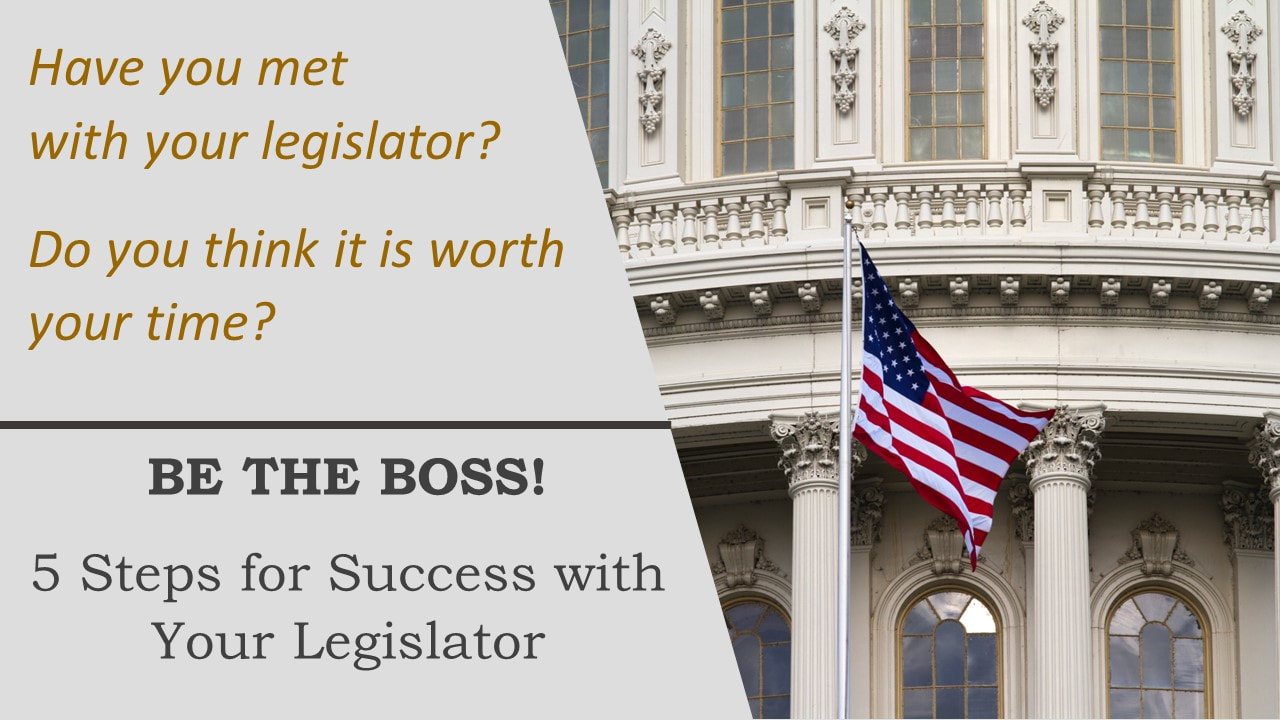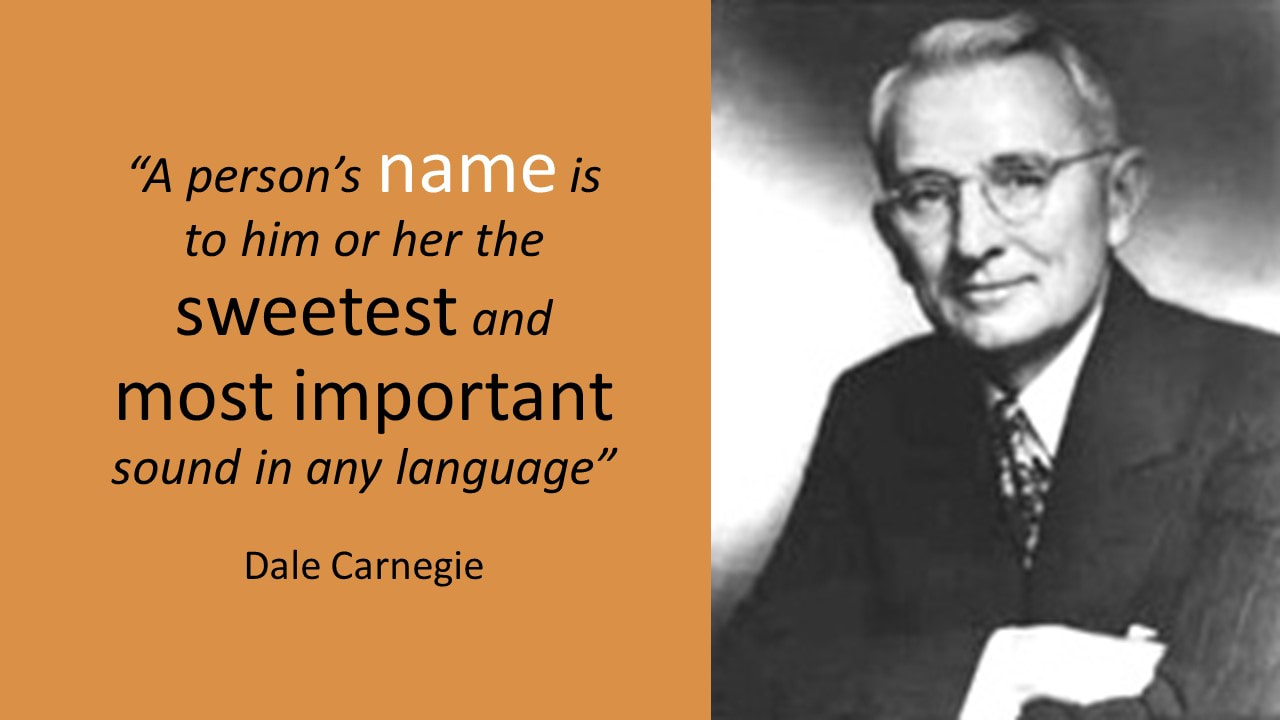|
Many of us feel distanced from our legislators. We don’t see them at the supermarket; we know highly paid lobbyists have access to their calendar. In fact, legislators LOVE meeting their constituents. Getting and preparing for a meeting with your legislator is quite similar to - and even easier than – getting and preparing for a job interview.
1. Prepare Preparing for a meeting with your legislator is simple. As the one calling the meeting, you get to set your agenda.
Similar to a job interview, doing your homework is key to your success. With legislator meetings, you have the bonus of bringing your team of experts with you (wouldn't that be nice for an interview!). Being succinct and clear improves your influence. 2. Set it up Request your meeting in writing; follow with a phone call. Note your issue (including bill number) and clearly state you are a constituent. Call the day before to confirm your meeting and:
Making a good impression with staff helps your success. Some organizations give employees equal say in hiring decisions. Similarly, most legislators rely on their staff to prioritize their time. Make a good impression for higher priority. In general, legislators love to meet constituents, making getting a meeting with them easier than getting most job interviews. 3. Perform Greet Staff Respectfully. Set a positive tone with everyone you greet on your visit to ensure your impression is positive. Introduce yourself to your legislator using your full name and where you are from. Address your legislator by their appropriate title (ask their staff or use this Emily Post list of honorifics). Thank them for their time and for meeting with you. Create Connection and Be Succinct. You will likely have 10-20 minutes to:
Listen. While you are there to be heard, you will better promote your cause if you also listen well. Ask for your legislator’s thoughts and experience on the topic (think “discussion” rather than “lecture”). Unlike interviewers, legislators will likely share people, places, and experiences with you. Building a positive relationship while succinctly focusing on your key message and asking good questions in an interview helps you land a job. These same skills improve your ability to advocate for your cause. 4. Nail the close Before leaving, thank those who met with you for their time and the meeting. Leave materials that are easy to comprehend at a glance. Promise to follow up where you can, such as sharing an article or resource. Ensure you have accurate contact information and perhaps permission for a group photo or social media post. Closing with next steps in mind grows your success with your legislator just as in a job interview. When thanking them, mention what you especially enjoyed learning and how you might follow up on something discussed. These strategies help with interviews, meetings with legislators, and all other interactions. 5. Follow up Build on your meeting by following up well. That evening, send a thank you email and follow with a handwritten thank you note. For social media posts:
A thank you that includes promised information, contacts, or resources builds on your positive impression for both interviewers and legislators. When you leave the meeting, you leave an impression that will start to fade. An email within 24 hours creates a ping to that memory that keeps it fresh. The handwritten thank you note provides another ping several days later, keeping you and your cause fresh in their mind. Effective follow up grows connection and keeps your meeting fresh in their memory, maximizing your impact with interviews and legislators alike. Most legislators love to meet with constituents. Taking steps to make interviews successful directly translate to maximizing your impact with legislators. The added bonuses are that you can bring a team and post on social media. Following these steps will build positive relationship with and increase your influence over your legislators. Photo credit: Ramaz Bluashvili
0 Comments
Create your own Gratitude Bump* by using someone’s name when thanking them. Even better, teach your children to do so for these three reasons.
Going back to school invites many opportunities to say “thank you,” to friends, family, neighbors, sitters, childcare centers, coaches, camp counselors, and, of course teachers and staff at your child’s school. We parents benefit from a reminder to “say thank you” to the many in our village who make successful parenting possible. More powerful, however, is the reminder to train our children to say thank you. The growing body of research on the benefits of expressing gratitude show that training our children to say thank you improves their academic and social success and their mental and physical health. As a parent, I appreciate how saying thank you makes them generally more pleasant to be around! These benefits comprise the Gratitude Bump* – the improvement to every area of their lives when they express gratitude. The Gratitude Bump* offers immediate and long-term benefits, and is limitless. You can layer Gratitude Bumps* on each other for ever-increasing benefits. You create the Gratitude Bump*, by using four key elements when expressing gratitude. One of these elements is saying someone’s name when thanking them. Saying someone’s name creates the Gratitude Bump* for three reasons. 1. Magic Words Your mother might have told you that “please” and “thank you” are the magic words, but there is a special magic in using someone’s name. People like hearing their own name. When you use their name, it is like a magic formula to endear them to you. Dale Carnegie’s famous insight, “A person’s name is to him or her the sweetest and most important sound in any language,” stresses the value you can create in that moment. That magic lasts in the long-run, too. Since their name brings strong, positive value to the conversation, you also increase the attention they give you. They will focus more intently on you and what you have to say. Thus, using their name is sort of a call to attention, and is most effective toward the beginning of your expression of gratitude or at any point you want them to listen to you closely: “Maria, thank you for…” “Thank you, Sam, for…” or “…so what I am saying, Jacinda, is thank you…” Saying their name directs their attention toward you and creates a positive connotation for what you are saying. The benefit survives the interaction, creating goodwill that lasts in the long-run. For children, this means their teachers, classmates, and community give them better attention in the moment and thinks more positively of them over time. 2. Focus on Gratitude Saying their name triggers your mind to focus on them. In that moment, your mind focuses on the other person and that you are grateful not for your receiving a gift, service, or kind word, but for their act of doing so for you. Focusing on the other person helps increase the Gratitude BumpTM by turning your focus outside of yourself. According to the UCLA Semel Institute for Neuroscience and Human Behavior, This shift in thinking creates an immediate positive chemical shift in your brain chemistry that lasts beyond the conversation, providing short-term and long-term benefits. Most children are ego-centric. Training them at a young age to focus on others helps develop empathy, important for life-long success, and creates a habit of expressing gratitude, which also is important for life-long success. 3. Connection Builds Trust Saying their name builds trust and connection because they will perceive your expression as being more personal and more sincere than they would if you did not say their name, regardless of your actual level of sincerity. Increasing your personal and sincere communication helps that person hold you in higher esteem for longer, therefore improving your relationship with this friend, colleague, or teacher – yet another way in which using a person’s name in a thank you creates a Gratitude Bump.TM The immediate benefit of perceiving your interaction as more sincere and personal lasts long-term, too. Teachers and classmates who see your children as more sincere and personal will develop more trust in your children and build stronger relationships with them. Stronger social circles result in stronger academic success and greater satisfaction with school. A Word of Caution One caveat is that, as with all methods of communication, this one can be overdone. Overusing someone’s name tends to come across as sounding insincere or “salesy.” In a short thank you, saying someone’s name once is usually sufficient, and perhaps again as you close your conversation. Use your judgment to ensure you are making this tool part of your natural repertoire rather than adopting a message that sounds formulaic, and when training your children to adopt this element of saying thank you. Conclusion Children benefit at least as much as we do from saying someone’s name when expressing gratitude. It helps others focus and makes their attention more positive, puts your children’s mind in a healthy place while building empathy, and builds stronger relationships with teachers and peers. Teach your children to say someone’s name when expressing gratitude. They will create their own Gratitude Bump* to improve every area of their lives both immediately and in the long-run. |
Megan Mayer
|


 RSS Feed
RSS Feed